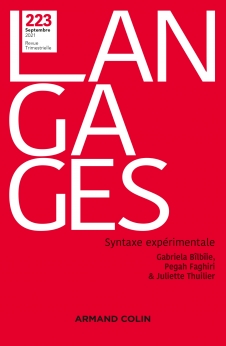
LANGAGES Nº 223 (3/2021)
Pour acheter ce numéro, contactez-nous
Recevez les numéros de l'année en cours et accédez à l'intégralité des articles en ligne.
Nous avons testé l’accord en nombre du verbe avec un sujet coordonné par ou en français par une étude de corpus écrit et par une expérience de jugement d’acceptabilité. Alors que le pluriel est plus fréquent dans le corpus, le singulier comme le pluriel sont acceptés dans l’expérience ; de plus, le caractère humain des sujets favorise le pluriel (dans l’ordre SV) et l’ordre VS favorise le singulier. Si l’on interprète l’accord pluriel comme un cas de résolution et le singulier comme un accord de proximité, ces effets confirment pour le français les résultats trouvés pour d’autres langues et les généralisations typologiques proposées par Corbett (1991). La préférence pour le pluriel avec ni...ni, aussi bien dans le corpus que dans l’expérience, peut, quant à elle, s’expliquer par des raisons sémantiques et/ou structurales. Dans ce cas, le caractère humain des sujets ne joue pas et l’ordre VS joue un rôle faible en faveur du singulier.
We tested number agreement of the verb with a subject coordinated by ou ‹or› in French, by a written corpus study and by an acceptability judgment experiment. While the plural is more frequent in the corpus, the singular and the plural are both well accepted in the experiment; moreover, human subjects favor the plural (in the subject-verb order), and the verb-subject order favors the singular. If we interpret plural agreement as a case of resolution, and the singular as proximity agreement, these effects in French confirm the typological generalizations proposed by Corbett (1991), as found for other languages. The preference for the plural with ni...ni ‹neither...nor›, both in the corpus and in the second experiment, can be explained by semantic and/or structural reasons. In this case, the human character of the subjects does not play a role, and the verb-subject order plays a weak role in favor of the singular.